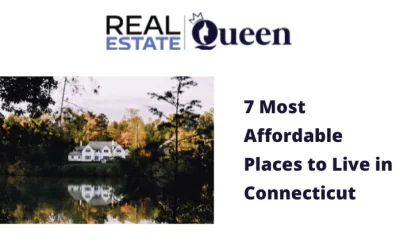
Considering a move to Kansas? With its diverse economy and vibrant urban hubs like Kansas City and Wichita, Kansas offers a great balance of affordability and lifestyle. The average cost of living in Kansas for 2025 stands at around 86.5, which is about 11% below the national average.
Here’s a detailed look at what expenses to expect in housing, utilities, and more.
TL;DR: Average Cost of Living in Kansas 2025
- Cost-of-living index: 86.5 (11% below national average)
- Average rent: $1,201 per month (2-bedroom average ~$1,082)
- Median home price: $230,884
- Average monthly utility bill: $574
- Average grocery cost per week: $250.88
- Estimated annual transportation cost: $10,800
- Average monthly health insurance premium (Bronze plan): $425
- Median income needed: About 11-15% lower than national middle-class median income
Understanding the Average Cost of Living in Kansas
Living comfortably in Kansas means earning an income that matches the cost-of-living index of 86.5. You need roughly 11–15% less than the national middle-class income. Therefore, Kansas is attractive for those seeking affordability along with both city and suburban access.
Specifically, key monthly expenses include:
- Rent: $1,201 on average, a bit higher than Oklahoma but less than Missouri and Nebraska.
- Groceries: Around $250.88 weekly, slightly more than in Iowa and Nebraska.
- Utilities: About $574 monthly, competitive with nearby states.
- Healthcare: $425 monthly premiums, moderate and better than in Missouri or Alabama.
- Transportation: About $900 monthly, which matches Midwest norms.
Overall, these numbers show how Kansas remains a solid choice for affordable living.
Housing and Rental Market in Kansas
Kansas’s housing market is a major factor in the state’s overall affordability. The average rent in Kansas is $1,201 per month, while a 2-bedroom apartment averages about $1,082. Median home prices are around $230,884. These figures offer strong options for both homeownership and renting.
When compared to other states, the difference becomes clearer:
- Missouri: Rent 6% higher; median home price 9% higher.
- Nebraska: Rent 13% higher; median price 15% higher.
- Oklahoma: Rent 11% lower; median home price 10% less.
- Colorado: Rent 30% higher; prices 139% higher.
- Alabama: Slightly higher rents and prices.
- Iowa: Slightly lower rents (-9%) and prices (-5%).
Moreover, Kansas City, Wichita, and Topeka serve as key hubs. Kansas City features metropolitan rental rates, while Wichita offers more affordable home prices. Both cities provide a range of housing options, from historic neighborhoods to new developments.
👉 Looking for homes for sale in Kansas that match your budget? Discover the latest listings with advanced search filters and sorting options on Houzeo, America’s best home buying website.
Utilities and Other Living Expenses in Kansas
Utility costs in Kansas add another layer of affordability. The average monthly utility bill is about $574, which includes electricity, water, and heating. Electricity rates are moderate and predictable throughout the year.
When compared to nearby states, Kansas fares well:
- Missouri: 3% higher.
- Nebraska: 2.5% lower.
- Oklahoma: 1% lower.
- Colorado: 7.5% higher.
- Iowa: 12% lower.
In addition, grocery costs are slightly more than in Iowa or Nebraska, but still reasonable. Transportation costs reach about $10,800 annually, which is typical for the Midwest. Healthcare premiums average $425 monthly, keeping medical expenses fair, though slightly higher than in Iowa or Oklahoma.
All in all, Kansas maintains balanced day-to-day living expenses.
Income, Job Market, and Affordability in Kansas
To maintain a middle-class lifestyle, Kansans need an income about 11–15% below the national median. This fits perfectly with the lower cost of living. Employment remains stable, especially in manufacturing, healthcare, and education sectors.
When compared to neighboring states:
- Salaries are more affordable than in Missouri and Colorado.
- Income aligns well with both housing and living costs.
- Healthcare costs stay moderate across most regions.
As a result, Kansas offers a strong balance between income levels and affordability.
Is the Average Cost of Living in Kansas Worth It?
Yes, it is. Kansas blends affordability with great local amenities. Lower housing and utility costs ease financial pressures for families and professionals alike. Meanwhile, urban hubs provide culture, jobs, and entertainment.
For those prioritizing affordability and economic stability, Kansas stands out. It compares favorably with higher-cost states like Colorado and Alabama, making it a practical choice for long-term living.
Regional Insights and Tips for Relocation
Each region in Kansas offers a distinct lifestyle:
- Kansas City: Urban vibes, higher rents, and plenty of job opportunities.
- Wichita: Affordable homes and strong manufacturing and aviation jobs.
- Topeka: A government hub with lower housing costs.
- Suburbs and Rural Areas: Excellent value in housing and childcare.
Therefore, researching your preferred region before moving will help you tailor your budget more effectively.
Final Thought on Kansas’s Average Cost of Living
Kansas’s average cost of living is about 11% below the national average. The state shines in housing affordability, competitive utilities, and reasonable healthcare costs.
When compared with Missouri, Nebraska, and Oklahoma, Kansas consistently delivers strong affordability and a high quality of life. It is an excellent option for families, professionals, and anyone seeking both stability and value.
👉 Browse the latest Kansas homes for sale on Houzeo and match your budget with your dream neighborhood.
FAQs About Kansas’s Average Cost of Living
Is Kansas expensive to live in?
No, Kansas is not expensive to live in. The average cost of living in Kansas is about 11% below the national average, making it one of the more affordable states. Housing and utility costs are especially low compared to many other parts of the country.
What is the average rent in Kansas?
The average rent in Kansas is around $1,201 per month, while a two-bedroom unit costs about $1,082. This makes Kansas more affordable than neighboring states like Missouri and Nebraska.
How much does a median home cost in Kansas?
In 2025, the median home price in Kansas is $230,884. This is generally lower than in nearby states, except Oklahoma, where prices are slightly less.
What income do I need to live comfortably in Kansas?
To live comfortably in Kansas, you need a median income about 11–15% below the national middle-class average. This aligns well with the state’s lower housing, utility, and overall living costs.
Which Kansas cities are the most affordable to live in?
Cities like Wichita, Topeka, and Hutchinson are among the most affordable places to live in Kansas. They offer low housing costs, moderate utility bills, and access to steady job markets, making them ideal for families and professionals seeking value and comfort.






